Seasonal Migration Resources Available

Just in time! PolarTREC educator Katie Gavenus (MOSAiC Expedition, 2019) recently shared resources on seasonal migration including activities for learning outside, at-home, and in school. Included is information on some of the longest migrating birds - the Arctic tern, as well as land migrators such as caribou. She also shares how to take part in community-based monitoring and citizen science projects and recommended films about migration.
2020 August Sea Ice Outlook Report is Now Available Online
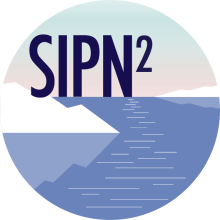
The 2020 August Sea Ice Outlook (SIO) report is now available online. The Sea Ice Outlook, an effort managed by the Sea Ice Prediction Network–Phase 2 (SIPN2), provides an open process for those interested in Arctic sea ice to share predictions and ideas. The monthly reports contain a variety of perspectives—from advanced numerical models to qualitative perspectives from citizen scientists. The Outlook is not an operational forecast.
For the 2020 August report, 39 contributions were received that included pan-Arctic predictions. Of those contributions, 10 included predictions for the Alaska Region and 7 included pan-Antarctic predictions. We received 13 submissions of sea-ice probability and 9 submissions of first ice-free date, and for the August report, ice advance dates were computed from four contributions. For 2020 we also invited contributors to submit initial conditions (sea-ice concentration and sea-ice thickness) of their forecasts to better understand how observations are being used in forecasts.
For the pan-Arctic, the median August Outlook value for September 2020 sea-ice extent is 4.30 million square kilometers, with quartiles of 4.1 and 4.5 million square kilometers. The median is close to the observed 2019 September sea-ice extent of 4.32 million square kilometers.
Arctic Research Seminar Series – Bridging Arts and Science
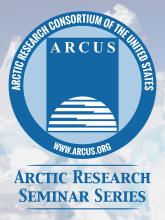
ARCUS invites registration for the next Arctic Research Seminar. This seminar, titled Bridging Arts and Science, will take place Monday, 21 September 2020 at 8:00 a.m. AKDT (9:00 a.m. PDT, 10:00 a.m. MDT, 11:00 a.m. CDT, 12:00 p.m. EDT).
The seminar will be presented by Matthew Burtner (University of Virginia), Leena Cho (University of Virginia), and Gabrielle Russomagno (School of Visual Arts). During this webinar presenters will discuss how their work spans science and the arts through media such as music, landscape architecture, and the visual arts.
Witness Community Highlights

The August 2020 issue of Witness Community Highlights is now available online. This issue includes two articles: “Activity Updates from the Arctic Domain Awareness Center,” an overview of the Center’s mission-driven research efforts and projects; and “Co-Producing Knowledge of Shorefast Ice in Uummannaq Bay, West Greenland,” describing research efforts to combine remote sensing technology with community-based monitoring and local and Indigenous knowledge to better understand how shorefast ice has changed as the Arctic warms and how these changes matter to individuals and communities in the Uummannaq region.
Global Impacts of a Changing Arctic

The Arctic is warming faster than anywhere else on the planet. Dr. Brendan Kelly discusses what this means and the importance of scientists, Indigenous Peoples and youth in this changing environment. Tune in to join the discussion with The Bridge's host and Students on Ice alum Julia Trombley on August 20th at 3pm EST.
The interview will be on Facebook Live and co-hosted by the US Embassy in Canada.
ARCUS Annual Meeting
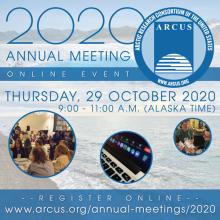
Please Save The Date! The 2020 ARCUS Annual Meeting will take place virtually this year on Thursday, 29 October 2020, 9-11am AKDT, 10am-12pm PDT, 11am-1pm MDT, 12-2pm CDT, 1-3pm EDT. ARCUS Annual Meetings serve as an important opportunity for for the Council of ARCUS Institutional Member Representatives, ARCUS Individual Members, and other members of the broader Arctic research community to connect with one another, the ARCUS Board of Directors, and staff. The meeting will be open to all interested participants and there is no cost to attend.
ARCUS Virtual Backgrounds Available
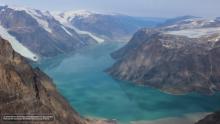
The Arctic Research Consortium of the United States (ARCUS) supports a rich range of Arctic research, education, and communication activities. Our Polar Media Archive is a valuable resource that is home to over 20,000 beautiful photos from across the Arctic. Of these, we’re proud to present 30 handpicked images to serve as virtual meeting backgrounds.
Dr. Brendan P. Kelly Receives Fulbright U.S. Scholar Award to Norway as Fulbright Arctic Chair
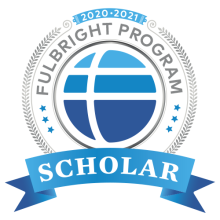
SEARCH Executive Director Dr. Brendan P. Kelly has received a Fulbright U.S. Scholar Program award to Norway. Kelly will conduct research at UiT The Arctic University of Norway as part of a project to study environmental change in the Arctic. In collaboration with Dr. Paul Wassmann and other Norwegian colleagues, Kelly will explore research and education approaches adapted to the rapid pace of change in Arctic ecosystems. At UiT The Arctic University of Norway, Kelly will observe firsthand Norwegian approaches to coordinating Arctic research and share their best practices with the Study of Environmental Arctic Change (SEARCH) in the United States and ArcticNet in Canada.
Call for Sea Ice Outlook Contributions
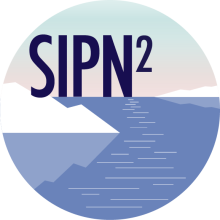
The Sea Ice Prediction Network–Phase 2 (SIPN2) announces the Call for Contributions for the 2020 Sea Ice Outlook August Report (based on May, June, and July data). The Sea Ice Outlook (SIO) provides an open process for those interested in Arctic sea ice to share ideas.
Pan-Arctic and Regional Sea Ice Extent Outlooks and any additional figures and gridded fields will be accepted for the 2020 August Outlook. We particularly encourage submissions for the Alaska region (i.e., Bering, Chukchi, and Beaufort seas). All participants whose methods provide information at the local scale are encouraged to provide full spatial fields via the SIPN Data Portal. New for the August SIO Report: Forecasts for ice advance dates (IAD) will be calculated from the full spatial fields of sea ice concentration that extend through the ice-advance seasons.
The 2020 SIO will also accept pan-Antarctic sea ice extent of the September monthly mean. Additionally, we encourage submissions to the associated effort of the Sea Ice Drift Forecast Experiment.
Submission deadline: 6:00 p.m. (AKDT) Wednesday, 12 July 2020 (firm).
Witness the Arctic
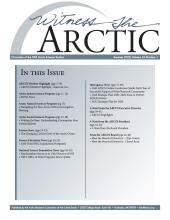
This issue includes news about the new NSF Director, Dr. Sethuraman Panchanathan; updates from NSF’s Office of Polar Programs; summaries of recently released strategic plans from NOAA’s Office of Oceanic and Atmospheric Research (OAR) and from the American Geophysical Union (AGU); science articles about understanding circumpolar bear ceremonialism and about the changing carbon cycle of the Arctic Ocean; updates on the PolarTREC program and the Sea Ice Prediction Network–Phase 2 project; overviews of the first Navigating the New Arctic (NNA) Investigators Meeting and of the sixth annual APECS conference; comments from the ARCUS Executive Director, Board President, and other board members; and a highlight of ARCUS member institution, Kawerak, Inc.
2020 July Sea Ice Outlook Report is Now Available Online
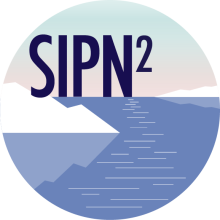
The 2020 July Sea Ice Outlook (SIO) report is now available online. The Sea Ice Outlook, an effort managed by the Sea Ice Prediction Network–Phase 2 (SIPN2), provides an open process for those interested in Arctic sea ice to share predictions and ideas. The monthly reports contain a variety of perspectives—from advanced numerical models to qualitative perspectives from citizen scientists. The Outlook is not an operational forecast.
For the 2020 July report, 38 contributions were received that included pan-Arctic predictions. Of those contributions, 10 included predictions for the Alaska Region and 7 included pan-Antarctic predictions. Additionally, we received 13 submissions of sea-ice probability and 10 submissions of first ice-free date. New this year, the report includes ice-free conditions for the Hudson Bay region; the September sea-ice concentration contour in the Fram Strait region, motivated by the MOSAiC expedition; and we invited contributors to submit initial conditions (sea-ice concentration and sea-ice thickness) of their forecasts to better understand how observations are being used in forecasts.
For the pan-Arctic, the median July Outlook value for September 2020 sea-ice extent is 4.36 million square kilometers, with quartiles of 4.1 and 4.6 million square kilometers. The median is close to the observed 2019 September sea-ice extent of 4.32 million square kilometers.
SIPN2 Webinar - Call for Registration
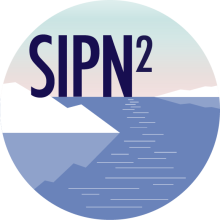
The Sea Ice Prediction Network – Phase 2 (SIPN2) invites registration for an open webinar entitled “Machine Learning—Challenges and Opportunities for Applications in Sea-Ice Prediction.” This webinar will focus on the use of Machine Learning and Artificial Intelligence, on how such approaches can be applied in cryospheric research, as well as related challenges and limitations. Discussion will include the use of advanced machine learning algorithms in climate science with attention on how to improve the prediction of future sea-ice. Time for participant questions will follow the presentations. This one-hour event will be held on Wednesday, 29 July 2020 starting at 8:00 am (AKDT).
New Resources Available Through PolarTREC
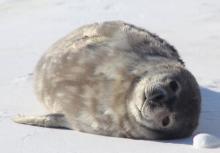
We are excited to announce new resources available through the PolarTREC website. Whether you are a classroom teacher looking for new lessons for next fall or an informal science educator looking for new ideas to use with your audiences - PolarTREC has resources for you! Recently published resources include:
- Growing Up on Ice – In this STEM-based lesson, students analyze Weddell seal pup growth data, collected by the Growing Up on Ice, B-030, research team.
- Don’t Clam Up - The Effect of Warming Seas on Respiration and Biomass – This lesson plan is designed to teach students about the importance of the benthic community in the shallow portions of the Arctic and how climate change may affect their respiration.
- Jumping Into Warming Seas – This lesson introduces students to the impacts of increasing ocean temperatures on marine life.
SIPN2 Webinar
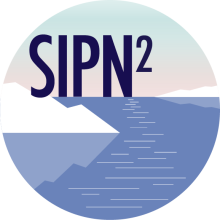
SAVE THE DATE for a Sea Ice Prediction Network webinar titled “Machine Learning—Challenges and Opportunities for Applications in Sea-Ice Prediction” scheduled for Wednesday, 29 July 2020 from 8:00 9:00 am (AKDT). This webinar will focus on the use of Machine Learning and Artificial Intelligence, on how such approaches can be applied in cryospheric research, as well as related challenges and limitations. Discussion will include the use of advanced machine learning algorithms in climate science with attention on how to improve the prediction of future sea-ice. Time for participant questions will follow the presentations. Registration instructions will be announced closer to the event.
Witness Community Highlights

The June 2020 issue of Witness Community Highlights is now available online. This issue includes two articles: “Arctic Data Center's New Customizable Portal Service,” summarizing features, applications, and examples of effective use of the new data tool; and “US Arctic Research Commission Hosts Virtual Conference and Workshop,” highlighting discussion panels and topics addressed during the virtual conference on COVID-19 Impacts in the Arctic, held in mid-May 2020; as well as an overview of the Virtual Alaska Electric Vehicle (EV) Workshop held in mid-June 2020.
Call for Sea Ice Outlook Contributions
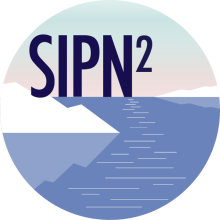
The Sea Ice Prediction Network–Phase 2 (SIPN2) announces the Call for Contributions for the 2020 Sea Ice Outlook July Report (based on May and June data). The Sea Ice Outlook (SIO) provides an open process for those interested in Arctic sea ice to share ideas. Pan-Arctic and Regional Sea Ice Extent Outlooks and any additional figures and gridded fields will be accepted for the 2020 July Outlook. We particularly encourage submissions for the Alaska region (i.e., Bering, Chukchi, and Beaufort seas). All participants whose methods provide information at the local scale to are encouraged to provide full spatial fields via the SIPN Data Portal. First ice-free dates (IFD) for Hudson Bay will be calculated from the full spatial fields that cover this region. For those interested, submissions the September 2020 80% sea ice concentration contour for Fram Strait are also invited. The 2020 SIO will also accept pan-Antarctic sea ice extent of the September monthly mean. Additionally, we encourage submissions to the associated effort of the Sea Ice Drift Forecast Experiment.
Submission deadline: 6:00 p.m. (AKDT) Monday, 13 July 2020 (Firm).
2020 June Sea Ice Outlook Report is Now Available
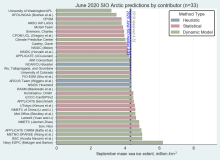
The 2020 June Sea Ice Outlook (SIO) report is now available online. The Sea Ice Outlook, an effort managed by the Sea Ice Prediction Network–Phase 2 (SIPN2), provides an open process for those interested in Arctic sea ice to share predictions and ideas. The monthly reports contain a variety of perspectives—from advanced numerical models to qualitative perspectives from citizen scientists. The Outlook is not an operational forecast.
For the 2020 June report, 33 contributions were received that included pan-Arctic predictions. Of those contributions eight included predictions for pan-Antarctic and the Alaska Region. Additionally, we received 13 submissions of sea-ice probability and ten submissions of first ice-free date. New this year, the report includes ice-free conditions for the Hudson Bay region; September sea-ice concentration contour in the Fram Strait region, motivated by the MOSAiC expedition; and we invited contributors to submit initial conditions (sea-ice concentration and sea-ice thickness) of their forecasts to better understand how observations are being used in forecasts.
For the pan-Arctic, the median June Outlook value for September 2020 sea-ice extent is 4.33 million square kilometers, with quartiles of 4.06 and 4.59 million square kilometers. The median is close to the 2019 June Outlook, of 4.40 million square kilometers, and to the observed 2019 September sea-ice extent of 4.32 million square kilometers.
Accounting Assistant Position
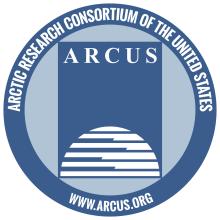
ARCUS is seeking an Accounting Assistant. This position, based in Fairbanks, Alaska, reports to the Director of Finance and Human Resources and provides accounting and administrative support to ARCUS. The position is temporary part-time with the possibility of developing into regular part-time.
2020 Sea Ice for Walrus Outlook Season Closes
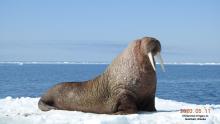
The Sea Ice for Walrus Outlook concluded the 2020 season on Friday, 12 June after twelve weeks of weekly reports featuring local observations from seven Bering Strait Communities, National Weather Service sea ice and weather forecasts, and NWS and ACCAP satellite images. All reports are available in our archive. Thank you to our local observers and partners for a productive season!
Navigating the New Arctic (NNA) Investigators Meeting Talks, Reports, & Summary Notes
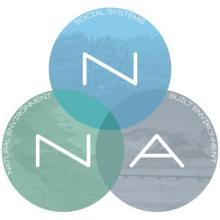
Lightning talk videos, project update reports, and summary notes from the first Navigating the New Arctic (NNA) Investigators Meeting are now available and can be found on the NNA Investigators Meeting webpage. The meeting was held virtually 16-17 April 2020.
Defining Problems in the Face of Urgency: Climate Change and the Arctic

"Informed by history, scientists and indigenous people must assess where the Arctic environment is headed and share their knowledge in words accessible to those who influence and make policy. Moreover, the words of policymakers should help define, for researchers, the most urgent societal needs. The Study of Environmental Arctic Change (SEARCH) approaches environmental Arctic change with a recognition that history, people, and words matter. Paying attention to the Arctic’s past, its inhabitants, and how we talk about its environment is necessary to properly define the problems."
Learn more in a new SEARCH article published today in the Georgetown Journal of International Affairs.
Call for Sea Ice Outlook Contributions
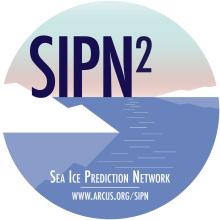
The Sea Ice Prediction Network–Phase 2 (SIPN2) announces the Call for Contributions for the 2020 Sea Ice Outlook June Report (based on May data). The Sea Ice Outlook (SIO) provides an open process for those interested in Arctic sea ice to share ideas.
Pan-Arctic and Regional Sea Ice Extent Outlooks and any additional figures and gridded fields will be accepted for the 2020 June Outlook. We particularly encourage submissions for the Alaska region (i.e., Bering, Chukchi, and Beaufort seas). All participants whose methods provide information at the local scale to are encouraged to provide full spatial fields via the SIPN Data Portal. First ice-free dates (IFD) for Hudson Bay will be calculated from the full spatial fields that cover this region. For those interested, submissions the September 2020 80% sea ice concentration contour for Fram Strait are also invited.
The 2020 SIO will also accept pan-Antarctic sea ice extent of the September monthly mean. Additionally, we encourage submissions to the associated effort of the Sea Ice Drift Forecast Experiment.
Submission deadline: 6:00 p.m. (AKDT) Wednesday, 10 June 2020 (Firm)
Witness Community Highlights

The May 2020 issue of Witness Community Highlights is now available online. This issue includes “Winter Worlds Project Highlights the Wonders of Snow in Alaska and Beyond.” This article summarizes the science education efforts of the Informal Science Learning project, “Our Winter World,” with examples of snow-themed community science nights in Alaskan villages; the design and development of a traveling museum exhibition on snow; and research exploring how cultural background affects learning in museum settings.
Arctic Research Seminar Series with Gerald “J.J.” Frost
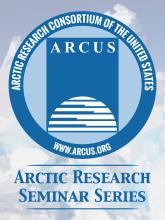
ARCUS invites registration for our next Arctic Research Seminar featuring Gerald “J.J.” Frost (Alaska Biological Research, Inc.). This seminar, discussing the “greening” of the Arctic, will be held Friday, 29 May 2020 from 9:00-10:00 a.m. AKDT (1:00-2:00 p.m. EDT) online via Zoom.
Science Writer/Editor Contract Position
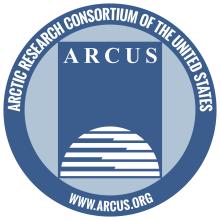
Update: We are no longer accepting applications for this position. ARCUS is seeking a freelance contract science writer/editor! This three- to six-month contract position will work with staff and contributors to our Witness the Arctic and Witness Community Highlights online newsletters, and other publications. Applications were due by 5:00 pm AK on Sunday, 31 May 2020.
